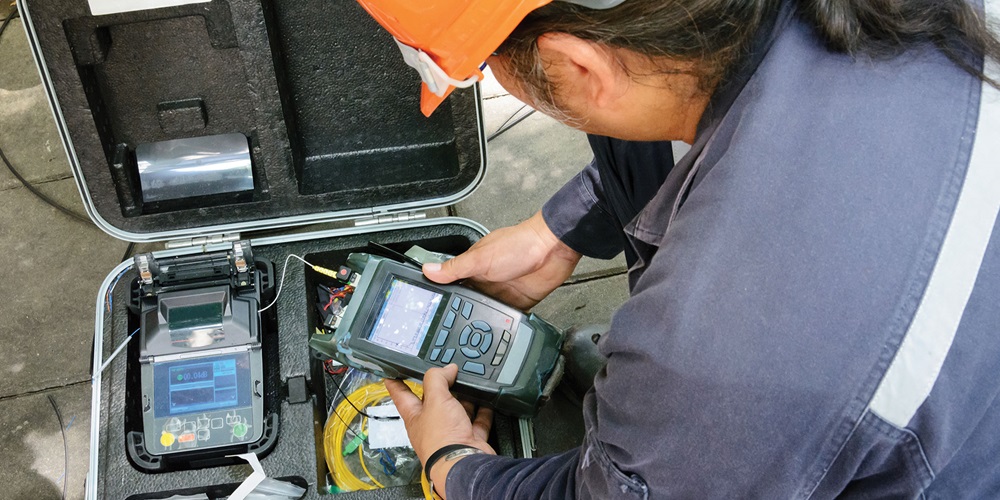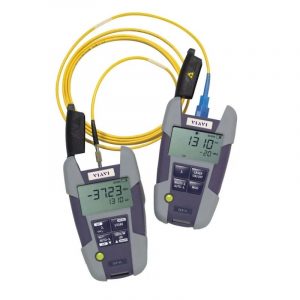Advanced fibre testing equipment analyzes defects and maintains fibre integrity.
Advanced fibre testing equipment analyzes defects and maintains fibre integrity.
Blog Article
Unveiling the Key Use Optical Fiber Checking for Reliable Information Transmission
In the realm of modern-day interaction, optical fiber testing arises as a necessary practice for optimizing information transmission. Understanding the multifaceted applications of optical fibre testing invites a much deeper expedition right into its critical role in shaping the future of data interaction.

Importance of Optical Fibre Testing
The value of optical fiber screening can not be overstated, as it works as a critical component in ensuring the integrity and performance of information transmission systems. In an era where high-speed communication is critical, any kind of shortages in fiber optics can result in significant data loss and minimized performance. Rigorous screening methods are important to validate the integrity and performance of optical cable televisions.
Testing allows for the recognition of flaws such as micro-bends, macrobends, and splice losses that could hinder signal quality. Additionally, it offers insights into the general depletion and bandwidth capabilities of the fibre, making sure that the network meets particular operational standards. Routine screening not only enhances system efficiency but likewise lengthens the life expectancy of the framework by recognizing prospective problems before they escalate into costly failures.

Kinds Of Optical Fiber Tests
Numerous sorts of optical fiber tests are conducted to make certain the performance and reliability of fiber optic networks. These examinations can be categorized right into a number of essential kinds, each offering a certain objective in analyzing the stability of the fibre.
First, Optical Time Domain Name Reflectometry (OTDR) is a famous test that recognizes mistakes, splices, and ports within the fibre. By sending pulses of light and evaluating the reflected signals, professionals can determine concerns along the fibre's length.
Second, insertion loss tests assess the quantity of signal loss when light passes through ports or splices, which is important for maintaining network efficiency.
Third, return loss tests determine the quantity of light mirrored back in the direction of the resource, offering insights into the high quality of links and possible sources of interference.
Furthermore, connection tests guarantee that the fibre course is total, enabling professionals to verify that the fibre is intact without any breaks. robotic vision.
Finally, visual mistake locators make use of visible light to recognize breaks or serious bends in the fibre, assisting in quick troubleshooting. Jointly, these tests develop a thorough approach to preserving ideal efficiency in fiber optic networks.

Applications in Network Maintenance
In contemporary telecommunications, reliable network maintenance depends heavily on optical fibre testing to recognize and correct concerns immediately. Regular screening guarantees that the network operates at optimum efficiency degrees, minimizing downtime and enhancing individual experience.
One of the primary applications of optical fibre testing in upkeep is the detection of faults, such as breaks, bends, or inappropriate connections. Techniques like Optical Time Domain Reflectometry (OTDR) enable technicians to locate these issues precisely and examine the top quality of the fibre link. Furthermore, loss screening validates the honesty of the optical course, making sure that signal depletion continues to be within acceptable limitations.
Regular maintenance testing additionally aids in safety nets, identifying prospective problems before they rise into considerable failures. This positive method can conserve organizations both time and funds. During upgrades or developments, optical fibre testing guarantees that new setups integrate seamlessly with existing moved here facilities.
Enhancing Information Transmission Integrity
Reliable network upkeep via optical fiber screening not just addresses immediate problems however likewise plays a substantial function in improving information transmission reliability. By recognizing faults, gauging signal loss, and examining the total problem of fiber optic cable televisions, testing makes sure that possible issues are rectified before they intensify right into considerable disruptions.
Routine optical fiber screening, such as time-domain reflectometry (TDR) and optical time-domain reflectometry (OTDR), allows specialists to determine the precise areas of breaks, flexes, or connector issues within the network. This proactive strategy not just decreases downtime but additionally optimizes the efficiency of information transmission by making certain that the paths for signals are clear and operating successfully.
Moreover, screening aids in verifying adherence to sector requirements and specifications, which is crucial for preserving the honesty of data circulation. By guaranteeing that each link satisfies required limits for loss and top quality, companies can reinforce their self-confidence in the reliability of their data networks.
Eventually, spending in extensive optical fibre screening not only improves data transmission reliability but additionally sustains the long-lasting functional efficiency of interaction facilities.
Future Patterns in Fibre Screening
Arising innovations are positioned to change fibre testing, leading the way for enhanced performance and accuracy in information transmission diagnostics (optical fibre testing equipment). As the need for faster internet and greater bandwidth click here to find out more proceeds to rise, the combination of sophisticated devices such as expert system (AI) and machine learning (ML) is set to change traditional fiber testing methods. These innovations will enable predictive maintenance and automated mistake detection, substantially minimizing downtime and improving network dependability
Furthermore, the fostering of Web of Points (IoT) gadgets will certainly assist in real-time monitoring of fiber networks, permitting immediate recognition of performance issues. This shift in the direction of positive monitoring will minimize disruptions and maximize information flow.
Moreover, advancements in optical time-domain reflectometry (OTDR) and new screening standards will certainly enhance the precision of dimensions, ensuring that data integrity is kept throughout the transmission process. The advent of 5G modern technology additionally requires the growth of extra advanced fiber testing techniques to support its high-speed requirements.
Final Thought
In conclusion, optical fibre testing is essential for preserving efficient Get More Info information transmission within communication networks. Normal testing not just makes sure conformity with market standards however likewise facilitates proactive maintenance, inevitably contributing to the lasting dependability and efficiency of fibre optic systems.
Report this page